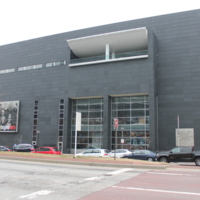
Reginald F. Lewis Museum of Maryland African American History and Culture
The Reginald F. Lewis Museum of Maryland African American History and Culture was created out of the passion and activism of businessman Reginald F. Lewis. Lewis rose from humble beginnings to earn a place at Harvard Law School, establish the first African American law firm on Wall Street and become the wealthiest African American in the US. In 1993, he died suddenly after a short illness. During his illness, he made known his desire to create a museum of African American culture and after his death, the non-profit foundation started in his memory accomplished that.
The museum is located in downtown Baltimore close to one of the several locations of former slave pens. The collection 'explores the African American experience and tells the universal story of the struggle for liberty, equality and self-determination.' The main collection is housed on the third floor and is divided into three sections: Building Maryland, Building America; The Strength of the Mind; Things Hold Lines Connect. Building Maryland, Building America has a heavy focus on slavery, explaining the roles of the enslaved in urban and rural environments. Unlike the cotton plantations of the Deep South, Maryland slavery ranged widely: tobacco plantations, shipyards, oyster shucking and iron furnaces to name a few.
Throughout the exhibitions, the interpretive text is supplemented with interactive displays, video and audio presentations and artwork. The overreaching message of the museum is that African Americans have contributed to the US since their initial forced arrival and have worked tirelessly to better their plight; through emancipation, the right to vote, the Civil Rights Movement and into the more recent social movements. The museum does not shy away from presenting the brutal side of slavery and Jim Crow, with slave collars, shackles, reward notices and video in connection to lynching are sensitively displayed.
The ground floor of the museum hosts temporary exhibitions and there is dedicated education space for the many school trips they host during the year. The museum also provides learning resources to assist with the local curriculum, offering lesson plans and outreach sessions in local schools. Throughout the year, the museum hosts a diverse range of events. The museum is open Wednesday through Sunday with a small admission fee.
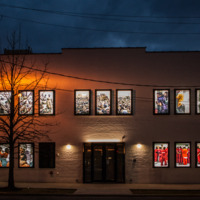
Legacy Museum
Open since April 2018, the Legacy Museum is built on the site of a former warehouse where enslaved Africans were imprisoned. The site is located between an historic slave market and the main river dock and train station where tens of thousands of enslaved people were transported through at the height of the domestic slave trade. Today it is a short walk from the National Memorial for Peace and Justice in the heart of downtown Montgomery, Alabama. The museum’s mission is to acknowledge and present the legacies of slavery, lynching, and racial segregation in the United States. The Legacy Museum is used to educate people about long-standing racial inequality in America and prompt them to search for truth and reconciliation with the aim of developing real solutions to contemporary problems. Its managing organisation, the Equal Justice Initiative, was founded in 1989 by Bryan Stevenson and was initially set up to help the poor, the incarcerated, and the condemned. In continuing this spirit of active community engagement, the museum also runs concerts and academic summits, and actively participates in human rights campaigning in Alabama.
The museum exhibition begins by showing replica constructions of slave pens, accompanied by unique audio and visual effects, attempting to allow visitors to empathise with an imprisoned slave waiting to be sold at the nearby auction block. There are also first-person accounts from enslaved people, portrayed on film by actors. Alongside these audio-visual experiences there are also more traditional exhibits that examine America’s history of racial injustice and its legacy, drawing connections across generations of Americans impacted by racial difference. These exhibits feature artefacts and archival materials. The museum also includes pieces of contemporary art, commissioned with creative partners to depict contemporary responses to the ongoing legacies of slavery and racial inequalities.
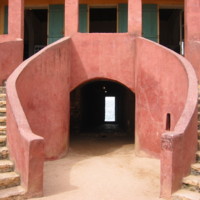
House of Slaves
The museum is located on Gorée Island, 3 km off the coast of Senegal. The structure was built in 1776 as a holding centre for Africans waiting to be exported across the Atlantic. It was converted into a museum and memorial in 1962. According to the original curator of the museum, Boubacar Joseph Ndiaye, the island played a pivotal role in the containment and transportation of slaves to America during the transatlantic slave trade. The aim of the museum and memorial is to help its visitors come to terms with the extent of the transatlantic slave trade and the effects of the trade on Africa and its people. It was designated a UNESCO world heritage site in 1978.
The content of the museum includes murals and artwork showcasing traditional African techniques, and depicting the process of enslavement. There is also a variety of objects such as chains, manacles, and cages which emphasise the brutal nature of slavery. The site itself is accessed via a ferry and the tourism industry of nearby Dakar is linked closely with the island. The key voices addressed within the museum are those of the enslaved; the museum brings visitors into close approximation with the living conditions faced by the enslaved during the transatlantic slave trade. One of the most poignant features is the 'Door of No Return' which is said to be the point where enslaved Africans were boarded onto ships ahead of the Atlantic voyage.
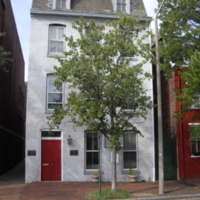
Freedom House Museum
The Freedom House Museum was once part of the headquarters for the largest domestic slave trading firm in the United States, Franklin and Armfield. Enslaved Africans were brought from the Chesapeake Bay area and forced to the slave markets in Natchez, Mississippi and New Orleans either by foot or ship. The building has a long history. In 1828, it was leased by Isaac Franklin and John Armfield and used as a "Negro Jail" or slave pen for slaves being shipped from Northern Virginia to Louisiana. During the American Civil War the museum and its surrounding sites were used firstly as a military prison for deserters, then as the L'Ouverture Hospital for black soldiers, and finally as the barrack for contraband-slaves who fled the confederate states and sought refuge with Union troops.
The building is currently owned by the Northern Virginia Urban League but the museum is managed by the office of Historic Alexandria. It operates as a reminder to the people of Alexandria of the city's role in historic slavery.
In the basement of the building there is a powerful exhibition which depicts the harsh reality of the domestic slave trade and Alexandria's role in it, through the use of first person narratives from enslaved men and women. These are complemented with a range of contextual text panels, artefacts, images and maps.
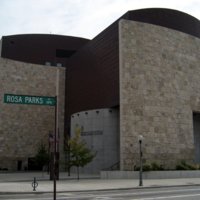
National Underground Railroad Freedom Centre
The National Underground Railroad Freedom Centre opened in August 2004 and has since strived to tell the stories of those who have fought for freedom from the Underground Railway to the present day in the hope of challenging people’s ideas about inclusivity and freedom. The museum also aims to encourage and inspire people to promote and work towards freedom. Its position next to the Ohio River is a poignant reminder of its purpose as this river separated the southern slave states from the free states of the North. The National Underground Freedom Centre examines America’s heritage alongside discussions of contemporary slavery and human trafficking. It also forms part of a group of 'Museums of Conscience' alongside three others across the United States, including the United States Holocaust Memorial Museum. The National Underground Railroad Freedom Centre reveals stories about freedom’s heroes: the men, women and children who challenge inequities to pursue greater freedom for their brothers and sisters. Through a series of rolling ‘special exhibitions’ and its vast collections displayed in several permanent exhibition spaces, the museum highlights the long history of enslavement in America, and its continuing legacy in the modern world.
The centre's most significant artifact is an original slave pen (or prison) originally built in 1830, and thought to be the only surviving example in the world. Visitors can walk through the pen and see some of the names of the people who were once held there. Alongside the pen, which is housed in its own exhibition space on the museum's second floor, there is a permanent exhibition, 'From Slavery to Freedom.' This exhibition covers three hundred years of slavery from its introduction to the Americas to its abolition. 'From Slavery to Freedom' is funded by the Oprah Winfrey Foundation and features a range of collections, including artefacts, archaeological specimens and paintings.
The centre also houses the 'world's first museum-quality, permanent exhibition on the subjects of modern-day slavery and human trafficking'; 'Invisible: Slavery Today' uses the experiences of five individuals who have been caught up in different forms of contemporary slavery and exploitation to highlight the issue in the modern world, as well as including examples of modern antislavery work around the world.
The centre also contains examples of interactive exhibits, with films, hands-on activities and live gallery talks, aimed at providing their visitors with a multi-sensory experience.